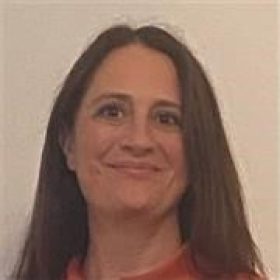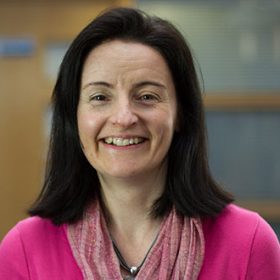On 25th September 2025, the University of Exeter’s Qualitative Research Reference Group (QRRG) hosted its third annual Qualitative Research Symposium, supported by PenARC. This year’s theme, Innovation and creativity for impact in health and social care research, invited attendees to pause, reflect, and consider how they can approach qualitative research in ways that are not only rigorous but also imaginative, collaborative, and impactful.
Dr Emma Pitchforth, Head of Department for Health and Community Sciences at Exeter University Medical School, opened the hybrid event by welcoming attendees and reiterating the value of simply coming together – both in person and online – to exchange ideas, make new connections, and strengthen collaborations.
Rethinking the everyday: Prof Tim Rapley on creativity in qualitative research
The day’s keynote came from Professor of Applied Health Care Research Tim Rapley (Northumbria University), who began by laying out a familiar challenge: busyness. Tim encouraged attendees to slow down and think collaboratively about conducting research differently.
“Life is too short produce the same stuff; it’s more fun to be creative” (Prof Tim Rapley)
Tim’s examples showed that creativity in qualitative research need not mean adopting radically new methods, but rather paying closer attention to the ordinary, such as stepping into participants’ homes to understand the realities of living with COPD; working with a chef to explore texture and taste with people experiencing swallowing difficulties; or drawing to capture lived experiences. His message was that qualitative research need not rely solely on surveys and interviews – by thinking outside the box, researchers may uncover richer data.
Tim reminded us that creativity is often sparked by collaboration across disciplines and professions, whether with lawyers, cartoonists, physiotherapists, or patients themselves. His challenge was clear: how can we deliberately make time to reflect, play, and experiment within our busy research lives? And crucially, how can we create more capacity for joy in the process?
“When possible, even if just for 5 minutes a day, try and think with others, slow the pace of your work, reflect, play and explore in whatever way makes sense for you” (Prof Tim Rapley)
Being creative with data
In his second session, Tim turned to the practicalities of creative analysis. He recalled a research group he once led that met weekly to reflect collectively on small snippets of qualitative data, often just a paragraph at a time. For Tim, these sessions highlighted the value of slowing down and embracing uncertainty.
He then invited participants to reflect on images in relation to their own data analysis practices, sparking lively discussion about the contrasts between screen-based approaches (such as NVivo) and more tactile methods like 3D collages. Sometimes, Tim suggested, a collage or a jigsaw puzzle might illuminate meaning more effectively than a codebook. A key theme was the importance of being comfortable with uncertainty: qualitative researchers rarely know in advance what the final picture will be.
This session captured a recurring theme of the symposium: creativity lies not only in what we research, but in how we work with the material we gather.
“Let’s think about ways to breach our habits and norms, because actually this is where creativity lies” (Prof Tim Rapley)
A panel of perspectives: arts, activism, disability and health inequalities
The panel discussion brought together an inspiring mix of researchers: Tim Rapley alongside Dr Hannah Zeilig (Reader in Arts and Health, London College of Fashion), Dr Oli Williams (Lecturer in Co-designing Health Interventions, King’s College London), and Professor of Disability Research Tom Shakespeare (London School of Hygiene and Tropical Medicine). Each spoke about how creative approaches to health and disability research have shaped their work and its impact.
- Prof Tom Shakespeare highlighted the necessity of hearing directly from disabled people about issues affecting their lives, and feeding this into policy and practice. He reflected on the importance of stories in disability research – whether through participatory video, creative writing, or novels with disabled protagonists.
“What really works and what changes people is stories” (Prof Tom Shakespeare)
- Dr Hannah Zeilig spoke of her transdisciplinary collaborations across the arts and sciences, on projects such as the role of arts for people with dementia in care homes to creative approaches to communicating with people being discharged from secure psychiatric units.
“Arts are often involved as an adjunct in health and social care- I’m interested in how arts can generate new questions, methods, and insights that might advance policy and practice” (Dr Hannah Zeilig)
- Dr Oli Williams reflected on impact in a wider sense: beyond academic metrics, he asked how research can genuinely improve people’s lives. His use of comics and design-led outputs demonstrated how creative communication can make research findings more accessible and influential than traditional academic outputs.
“The aim is to work creatively to make research much more impactful” (Dr Oli Williams)
In the Q&A, the panellists reflected on practicalities and challenges: the importance of collective action rather than individual visions; not being afraid to ask for funding for creative research, with even small amounts of money going a long way; valuing artists’ contributions; and working closely with service users by asking how they want their experiences represented. They highlighted that creative approaches can strengthen rigour, often generating richer insights than traditional methods, and that collaboration should never mean outsourcing – true partnerships require humility, kindness, and acknowledgment of others’ expertise.
Making space for creativity and impact
What stood out most from the Symposium was the shared commitment to carving out space, both literal and metaphorical, for creativity in qualitative research. Whether through interdisciplinary partnerships, alternative ways of asking questions or finding routes to represent findings outside academic journals, the message was clear: creative practice enriches rigour, deepens impact, and makes research more engaging for those it seeks to serve.
As one panellist put it, creativity in research should be “fun, not procedural”. It is about finding new ways to tell stories, reframing the familiar, and working alongside others to generate knowledge that resonates beyond academia.
For PenARC, as a partner and supporter of the QRRG, this event was a reminder of the power of qualitative research to not only understand experiences of health and care but to shape them. The challenge for all of us is to find more moments, however small, to slow down, reflect, collaborate, and experiment. In doing so, we can create research that is not just informative, but transformative.
Authors

Dr Jo Day
Senior Research Fellow